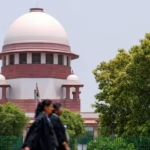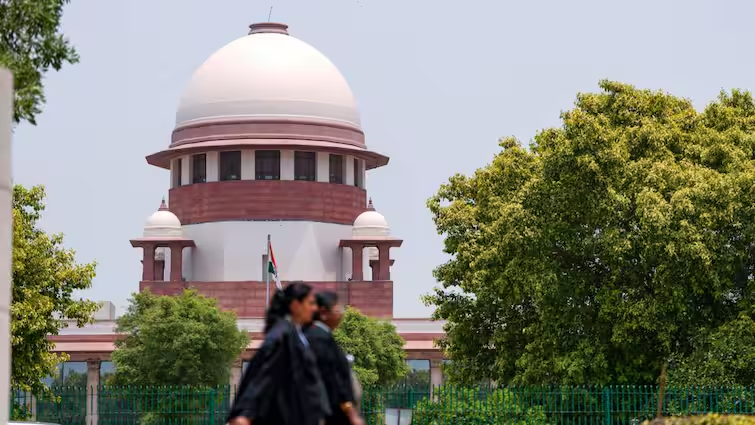Second Wave of Anti-Trump Protests Sweeps Across the US, Over 400 Rallies Held in All 50 States
A second round of large-scale demonstrations against former President Donald Trump was held across the United States, with over 400 rallies taking place in all 50 states. Although the turnout was reportedly smaller than the initial wave of protests that occurred earlier in April, the movement retained strong momentum, drawing thousands of concerned citizens into the streets once again.
The protests, which were organized by the activist group “Group 50501,” marked a significant continuation of public resistance to what the organizers describe as anti-democratic and unlawful actions by Trump and his political allies. The first round of protests, dubbed the “Hands Off” rallies, took place on April 5 and had witnessed a considerably larger participation. Nevertheless, Saturday’s demonstrations maintained the spirit of resistance and emphasized the need for sustained public pressure.
Nationwide Demonstrations Coordinated for Maximum Impact
According to Group 50501, the grassroots organization behind the protests, the latest wave of demonstrations was strategically organized to coincide in all 50 states. The group’s official website stated that the protests were a “decentralized rapid response to the anti-democratic and illegal actions of the Trump administration and its plutocratic allies.” The group emphasized that all rallies were intended to be peaceful and non-violent.
Despite appeals for millions to join the movement, turnout on Saturday appeared smaller compared to the April 5 rallies. However, the message from organizers remained clear: continued civic engagement is vital to resisting policies and actions that are seen as undermining democratic values and institutions.
Thousands gathered at various locations across the country, demonstrating against Trump’s policies, particularly those targeting immigration, science funding, and civil liberties.
Protest Highlights from Around the Country
In New York City, demonstrators assembled outside the city’s main public library. Many carried placards with messages condemning Trump’s leadership, with slogans such as “No Kings in America” and “Resist Tyranny” prominently displayed.
A recurring theme across many of the rallies was concern over Trump’s immigration policies. Protesters voiced strong opposition to the actions of the U.S. Immigration and Customs Enforcement (ICE), particularly its role in detaining and deporting undocumented immigrants. Chants like “No ICE, no fear, immigrants are welcome here” echoed through the crowds, reflecting widespread unease over the administration’s hardline stance on immigration enforcement.
Protesters Speak Out: Voices from the Movement
In Washington, D.C., protesters gathered near the White House to voice their concerns about what they described as Trump’s disregard for constitutional norms. Many expressed alarm that foundational principles such as due process and the rule of law were being undermined.
Benjamin Douglas, a 41-year-old student and pro-Palestinian activist, shared his perspective with AFP reporters. He said the administration was carrying out “a direct assault on the idea of the rule of law and the idea that the government should be restrained from abusing the people who live here in the United States.” Douglas, who was arrested during a previous demonstration, wore a keffiyeh and held a sign calling for the release of Palestinian prisoner Mahmoud Khalil. He added that certain individuals were being targeted as “test cases to rile up xenophobia and erode long-standing legal protections.”
Among the demonstrators in New York was 73-year-old Kathy Valy, whose parents were Holocaust survivors. She expressed deep concern about the parallels she sees between historical events and current political developments in the U.S.
“We are in great danger,” Valy said. “My parents told me stories about how Hitler rose to power. What’s happening here now is frighteningly similar.” She added, “The one difference is that Trump is a lot more foolish than Hitler or other fascists. He’s being manipulated, and even his own team is deeply divided.”
Another participant, Daniella Butler, a PhD student studying immunology at Johns Hopkins University, drew attention to the administration’s budget cuts to science and public health. Carrying a map of Texas marked with indicators of a measles outbreak, Butler warned, “When science is ignored, people die.” She criticized the government’s reduced support for scientific research and healthcare, saying it poses a direct threat to public safety.
From Texas to California: Protests Coast to Coast
In Texas, smaller protests took place in several cities, including Galveston. Patsy Oliver, a 63-year-old writer, took part in her fourth anti-Trump protest. She explained why she continued to speak out. “Normally, I’d just wait for the next election,” she said. “But we can’t afford to do that anymore. We’ve already lost too much. We have to act now.”
Meanwhile, on the West Coast, hundreds of demonstrators gathered on a beach in San Francisco to make a bold visual statement. Participants arranged themselves to spell out the words “IMPEACH + REMOVE,” a clear message aimed at Trump and his administration. The San Francisco Chronicle reported that others waved American flags flown upside down—an age-old signal of national distress.
Building a Long-Term Movement
Organizers of the protests say their mission goes beyond one-off rallies. They are working to channel the growing frustration over Trump’s policies into a long-lasting and organized movement. The focus is not just on immigration policies, but also on other controversial issues such as sweeping budget cuts to federal agencies, attempts to discredit the free press, and pressure on universities and legal institutions.
Group 50501 and other advocacy networks hope that by consistently mobilizing citizens, they can build momentum toward meaningful change. The protests are intended to remind elected officials that the public is watching—and that citizens will hold them accountable for decisions that threaten democratic values.
By staging events in all 50 states, the organizers aim to foster a sense of unity and solidarity across the country. Many activists stressed that the protests are not only about resisting Trump but also about defending the Constitution and promoting justice and equality.
A Movement in Motion
Though Saturday’s turnout may not have matched the massive crowds of the April 5 demonstrations, the continued dedication of activists and ordinary citizens points to the persistence of a movement that refuses to be silenced. The protests illustrate a widespread desire to protect democratic principles and human rights, especially in times of political turmoil.
Whether through holding signs, chanting slogans, or creating striking visuals like “IMPEACH + REMOVE” on a beach, protesters are finding new ways to express their dissatisfaction and call for change. As long as these concerns remain unaddressed, it is likely that the movement will continue to grow—both in numbers and influence.
Group 50501 and similar organizations remain committed to their cause and have indicated that more actions are planned in the weeks and months ahead. With the political climate still highly polarized, the protest movement appears to be evolving into a powerful force, determined to shape the future of American democracy through civic action, public awareness, and persistent advocacy.














